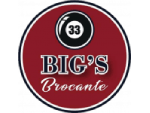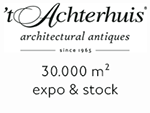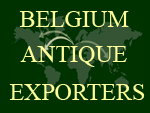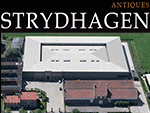|
Abstract painting on paper work by Wolfgang E. Biedermann, Leipzig Westgermany 1987 Small, repetitive motifs, characters, ciphers and writings, inspired by Asian calligraphers were generously painted over in abstract. Technique: Mixed media on paper Signature: Lower right by hand W. E. Biedermann 87 Short Biography: Wolfgang E. Biedermann was born in 1940 in Hannover - dece. 2008 in Leipzig Already as a high school student Wolfgang E. Biedermann's artistic talent was recognized by Ursula Mattheuer-Neustädt. She promoted him to evening studies at the Academy of Visual Arts (HGB) Leipzig. From 1961 Biedermann studied at the HGB in the specialist class for free graphics and painting with Gerhard Kurt Müller, completing his studies in 1967. Since 1968 Biedermann was active as a freelance artist in Leipzig. He undertook study trips to Poland, France and Indonesia, as well as to the USSR and the USA. From 1968 to 1991 he was a member of the Association of Visual Artists of the GDR and since 1996 a member of the Free Academy of Arts in Leipzig. The unique encounter with the German action artist Joseph Beuys had a great impact on Biedermann. The artistic work of Wolfgang E. Biedermann spanned from 1960 to 2008. His œuvre is characterized by the development of his own technique. In addition to drawings and sketches of the early work for study purposes he dealt over the years primarily with printing practices. He produced numerous abstract paintings and works on paper using color etching and silkscreen processes as well as multi-plate overprinting. Biedermann relied on different layering by means of various techniques of graphics and painting. He dealt extensively with overdrawing and overpainting his works. Repeating motifs are symbols, signs, ciphers and writings, which are based on Asian calligraphy. Biedermann dealt just as intensively with the content of philosophical writings by Peter Sloterdijk and with letters from the estate of Friedrich Schiller, which he transposed into the paintings. His color-intensive paintings reflect "inner landscapes". Klaus Werner coined this term as early as 1980 for the complete works of Wolfgang E. Biedermann. Since 1977 Wolfgang E. Biedermann presented his artworks at various exhibitions. On the occasion of his 50th birthday, the Lindenau Museum in Altenburg exhibited a comprehensive selection of 130 works in 1990. NordLB - Art, Hannover accompanied his further creative process for almost ten years with work locations in Berlin (Sony Center), Singapore, Zurich and Hamburg. At the EXPO 2000 in Hanover, twelve of his large-scale works were on display in the German pavilion. Parts of his œuvre have also been exhibited outside Germany in Tokyo, Paris, Damascus, Bilbao, Listovel, Mulhouse, Grenchen, Basel and Fredrikstad, among other places. Literature: -Lang, Lothar: Malerei und Grafik in der DDR. Leipzig 1978 -Hütt, Wolfgang: Graphic Art in the GDR. Dresden 1979 -Thomas, Karin: Painting in the GDR 1949-1988. Cologne 1980 -Dictionary of Contemporary Artists. Oxford 1981 -Hollmann, Eckhard: Von der Kunst Bilder zu drucken. Berlin 1986 -Feist, Günther: Stations of a Path, Documentation on Art and Art Politics 1945-1988, Berlin 1988 Solo exhibitions: 1977: Gallery in the club "Pablo Neruda", Gallery Barthel + Tetzner GmbH, Karl-Marx-Stadt/ Chemnitz 1979: Gallery at Sachsenplatz (with Agathe Böttcher and Dagmar Ranft-Schinke), Leipzig 1979: Gallery at the Steinweg, Suhl 1980: Gallery Arkade, Berlin (exhibition catalog by Dr. Klaus Werner) 1980; 1986; 1987: Gallery erph, Erfurt 1980: Gallery at the Boulevard, Rostock 1981: Greifengalerie, Greifswald 1984: Galerie unter den Linden, Berlin (exhibition catalog) 1987: Gallery Linneborn, Bonn 1988: Kubetz-Zenker, Frankfurt/Main 1988: Schiller Museum, Weimar 1988: Galerie am Thomaskirchhof, Leipzig (exhibition catalog with text by Dr. Klaus Werner) 1990: Lindenau Museum, Altenburg (exhibition catalog) 1992: Bayerische Vereinsbank, Leipzig 1992/93: Gallery at the market, Cottbus 1994/95: ALAPE, exhibition center Goslar-Hanhdorf 1994/95: Gallery at the Sachsenplatz, Leipzig 2000: Gallery Nord/LB Art, Hanover (exhibition catalog) 2005: Art Gallery in the District Court, Hanover 2007: Saxonian art work GmbH Leipzig Group exhibitions: 1969: Kupferstichkabinett of the State Museums, Berlin 1974: "25 years of graphic art in the GDR", Altes Museum/Berlin 1975: "Color Graphics in the GDR", State Museums Schwerin 1975: „DDR-Grafik“, Tokio, Japan 1975: „DDR-Grafik“, Berlin/West 1976: „Junge Künstler der DDR“, Altes Museum, Berlin 1976: 7. Internationale Triennale der Druckgrafik, Grenchen, Schweiz 1978/80/82: 4./ 5./ 6. Biennale der Druckgrafik, Fredrikstad, Norwegen 1978: „Naturgestalt und Verwandlung“, Nationalgalerie, Berlin 1978: Farbradierungen, Galerie Berlin/ Berlin 1978: Grafik-Biennale, Krakau, Polen 1980: 4. Europäische Grafikbiennale, Mulhouse, Frankreich 1981: Gruppenausstellung (mit Joachim Jansong), Galerie Nord, Leipzig Hand-Zeichnung-Triennale, Wroclaw, Polen, 1981 1981: Musée d’Art Moderne de la Ville de Paris, Paris; Le Havre, Frankreich 1982: Internationale Grafikbiennale, Bilbao, Spanien; Listowel, Irland 1982: Kunstmesse, Basel, Österreich 1983: Internationale Grafikbiennale Stockholm, Schweden 1983: „Zeichnungen von 50 Künstlern aus der DDR“, Galerie am Sachsenplatz, Leipzig 1984: Estampe du Rhin, Strasbourg, Frankreich 1991: Dresdner Bank AG, Leipzig 1990er Jahre: „Leipziger Künstler“, Kunsthalle der Sparkasse Leipzig, Leipzig 1992/93: „Kunst aus Sachsen“, Wirtschaftsministerium, Berlin 1992/93: Kunsthaus Tumulka, München 1993: „Entgrenzung“, Ausstellung der Nord/ LB Hannover, München; Berlin; Bonn; Magdeburg; Schwerin; Hannover 1997: „Lust und Last“, Leipziger Kunst seit 1945, Museum der bildenden Künste, Leipzig; Germanisches Nationalmuseum, Nürnberg 1998: „Visuelle Poesie“, Deutsche Bibliothek, Frankfurt am Main; Berlin; Leipzig 1999/2000: „Zeit – Bilder – Kunstobjekte, Sachsen – heute“, Ausstellung der Nord/LB zum 60. Geburtstag in Hannover „Nord/LB-Art“, Wanderausstellung NRW und Brüssel, Belgien. 2000: Deutscher Pavillon, EXPO 2000, Hannover
75 x 3.5 x 98cm
|






























